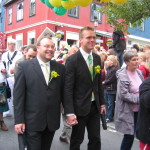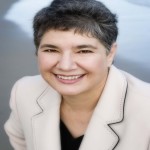 When Americans think about the people who mean the most to them, the people they can really count on when they need someone, they don’t come up with the same list of names that they once did. For a long time, immediate family members filled those roles. Grown-ups expected to look to their spouse first, and then, as they aged and perhaps became widowed, they had faith that their adult children would be there for them.
When Americans think about the people who mean the most to them, the people they can really count on when they need someone, they don’t come up with the same list of names that they once did. For a long time, immediate family members filled those roles. Grown-ups expected to look to their spouse first, and then, as they aged and perhaps became widowed, they had faith that their adult children would be there for them.
Big demographic changes have upended those core expectations. Record numbers of Americans are living single and the vast majority of them are not cohabiting. They can’t look to a spouse or romantic partner for help if they don’t have one. Also becoming increasingly commonplace is the experience of not ever having children. Seniors cannot count on their grown children to care for them when they don’t have any children. Even those seniors who did have kids sometimes find that when they need their kids, they are preoccupied with their own lives, or they live far away, or they are estranged.
Because of these changes and others, Americans now have more expansive ideas about who counts as family. The phrase “families of choice” has become a familiar one. Probably more often than ever before, Americans are choosing the people who matter most to them and considering them family. No longer do “family” members have to be people related by blood or marriage or adoption.
The notion of “families of choice,” though, is not at all new to one particularly important group of Americans – the LGBT community. Here’s some of what I said about that in Single, No Children: Who Is Your Family?:
Perhaps the most significant development in the evolution of the meaning of family was almost entirely missing from the consciousness of mainstream America – until the anthropologist Kath Weston published Families We Choose: Lesbians, Gays, Kinship in 1991. “Families of choice” may well offer the most prescient view we have of what families of the future might look like, and not just in LGBT communities.
Among the transformative social movements of the 60s and 70s were the gay rights and gay pride movements. But virulent homophobia, magnified by the AIDS crisis, left many gays and lesbians still fearful of coming out and ostracized by their own biological families when they did. Not about to be condemned to lives of isolation and loneliness, some moved to more hospitable places, such as San Francisco or Greenwich Village. They made new friends and kept some of the old, nurtured romantic relationships while often saving a place in their lives for former lovers. They stayed in touch with their relatives who were supportive. These new social networks sometimes included children, and they extended across households. They were fluid, flexible, and informal social convoys, providing sufficient continuity and consistency over time to offer a strong and secure sense of identity and community – and family.
Members of these families of choice were there for each other in the day to day rituals of everyday life, often getting together for meals and social events, holidays and celebrations. They were bulwarks in times of crises. Some drew from each other’s strengths and resources to organize and mobilize. They all shared experiences and conversations over the course of years. They exchanged emotional, practical, and material support – sometimes even the financial help that among heterosexuals so often comes solely from blood relatives. They were sources of mutual caring, in times of both sickness and health.
Over the decades, the LGBT community has been showing the rest of America how to think about family in big, broad, expansive ways. They have been demonstrating what it means to value many kinds of relationships, and not just romantic ones.
At the same time, conventional heterosexual couples have all too often been behaving in exactly the opposite ways. Study after study has shown that married people are less likely to nurture their ties with siblings, parents, friends, and neighbors than unmarried people are. Research that follows the same people over time, as they go from being single to getting married, shows that people become more insular when they get married (or begin cohabiting). Couples focus primarily on each other, and pay less attention to the people who were important to them when they were single. This narrowing of affections cannot be blamed on the presence of children; even couples who don’t have children become more insular.
Of course, not all couples behave that way, and historically and cross-culturally, married couples did not always recede into their own bubbles. But that’s where we are now, in 21st century America.
I do not have a definitive answer to the question that motivated this article – “Will Same-Sex Marriage Undermine One of the Best Things the LGBT Community Gave to the World?” – and neither does anyone else. Same-sex marriage is too new, and the relevant research has not yet been done. We don’t know whether LGBT couples will act like heterosexual couples, becoming more insular once they marry, and thereby undermining one of the best things the LGBT community has modeled for the rest of the world. I’m rooting for the alternative. Maybe the newly married LGBT couples can show everyone else what it means to continue to value all the people who matter to you, even after the gates of traditional marriage have finally been thrown open to you.
[Notes. (1) The opinions expressed here do not represent the official positions of Unmarried Equality. (2) The comment option on the UE website has been invaded by spammers, so I have disabled comments for now. I’ll post all these blog posts at the UE Facebook page; please join our discussions there. (3) Maybe also of interest: Gaydar: Who has it and what cues are they using? (4) For links to previous columns, click here.]
 About the Author: Bella DePaulo (PhD, Harvard), a long-time member of Unmarried Equality, is the author of How We Live Now: Redefining Home and Family in the 21st Century and Singled Out: How Singles Are Stereotyped, Stigmatized, and Ignored, and Still Live Happily Ever After. She writes the “Living Single” blog for Psychology Today and the “Single at Heart” blog for Psych Central. Visit her website at www.BellaDePaulo.com.
About the Author: Bella DePaulo (PhD, Harvard), a long-time member of Unmarried Equality, is the author of How We Live Now: Redefining Home and Family in the 21st Century and Singled Out: How Singles Are Stereotyped, Stigmatized, and Ignored, and Still Live Happily Ever After. She writes the “Living Single” blog for Psychology Today and the “Single at Heart” blog for Psych Central. Visit her website at www.BellaDePaulo.com.


